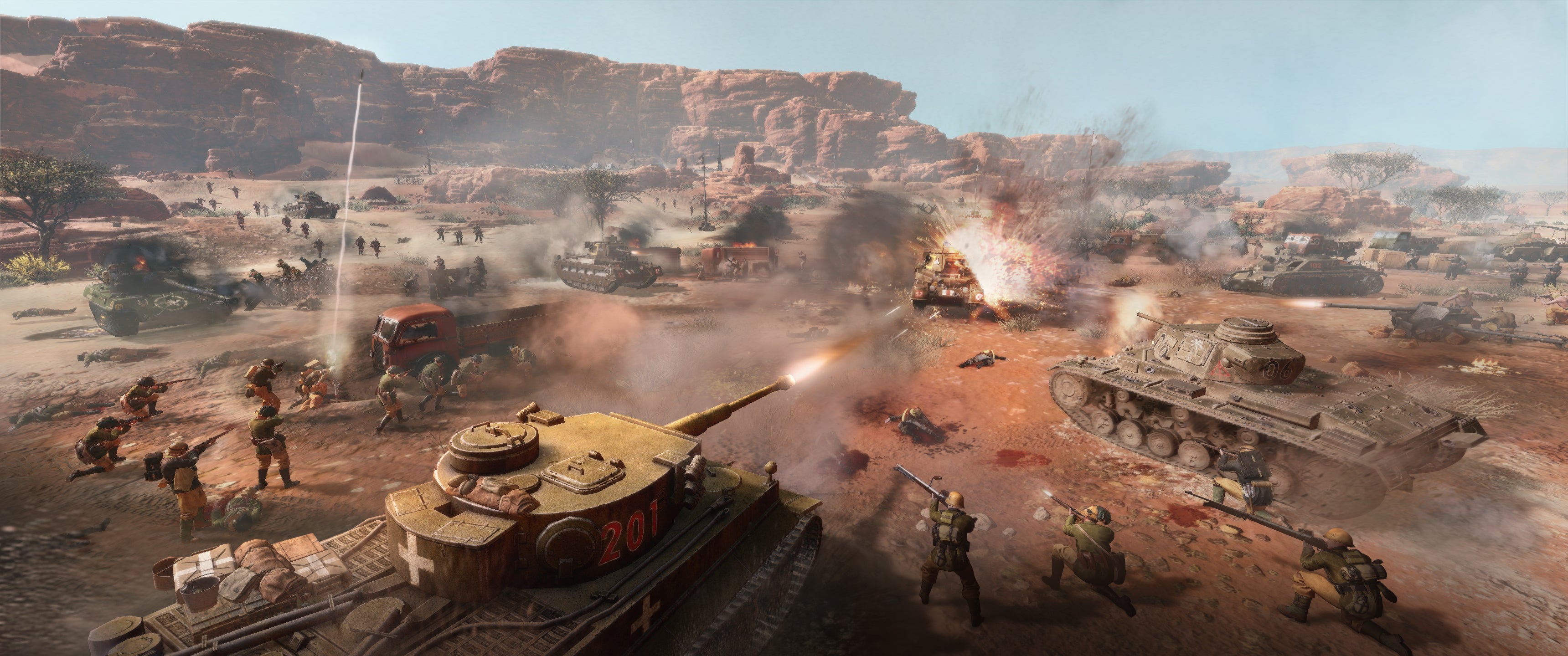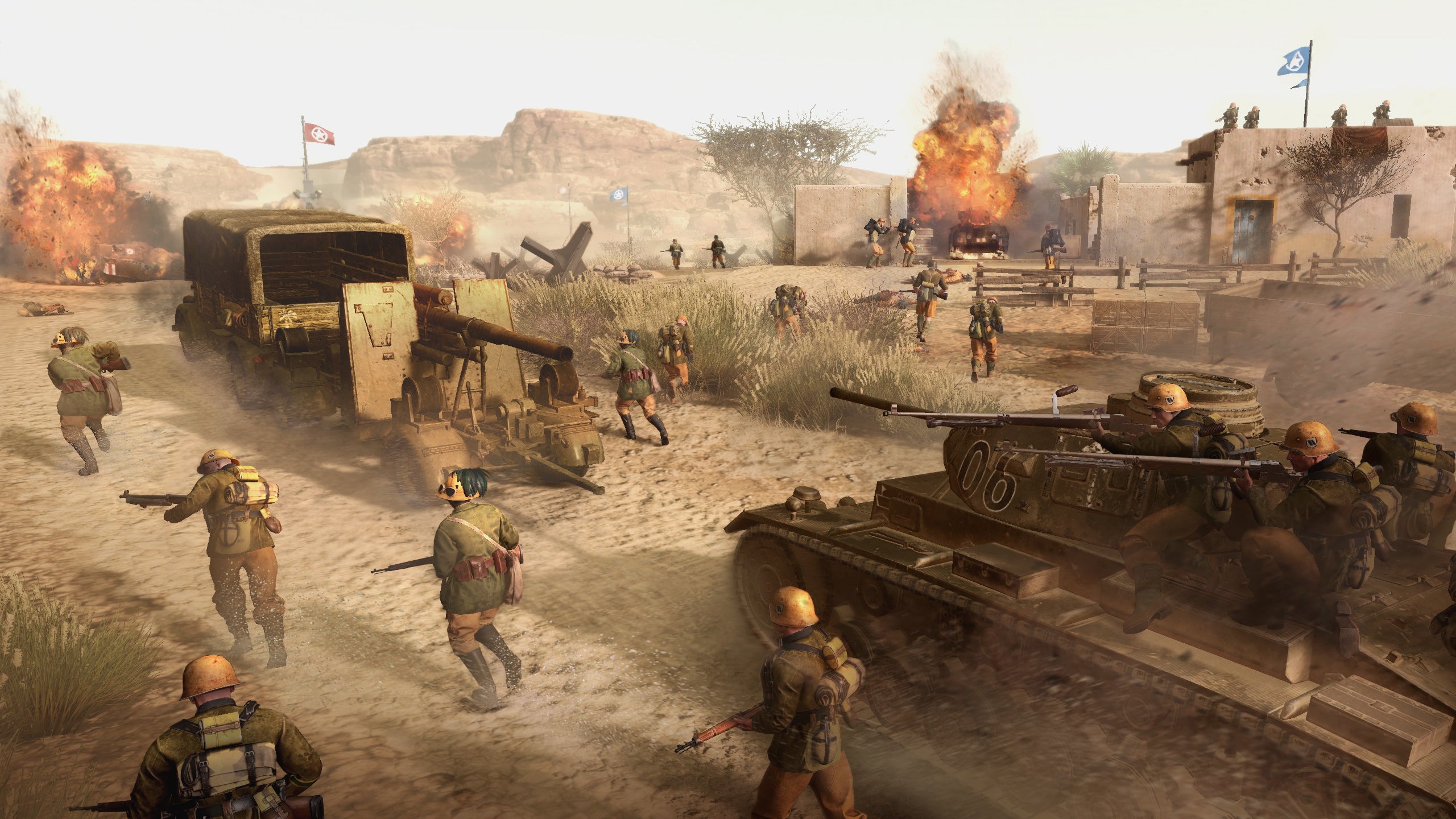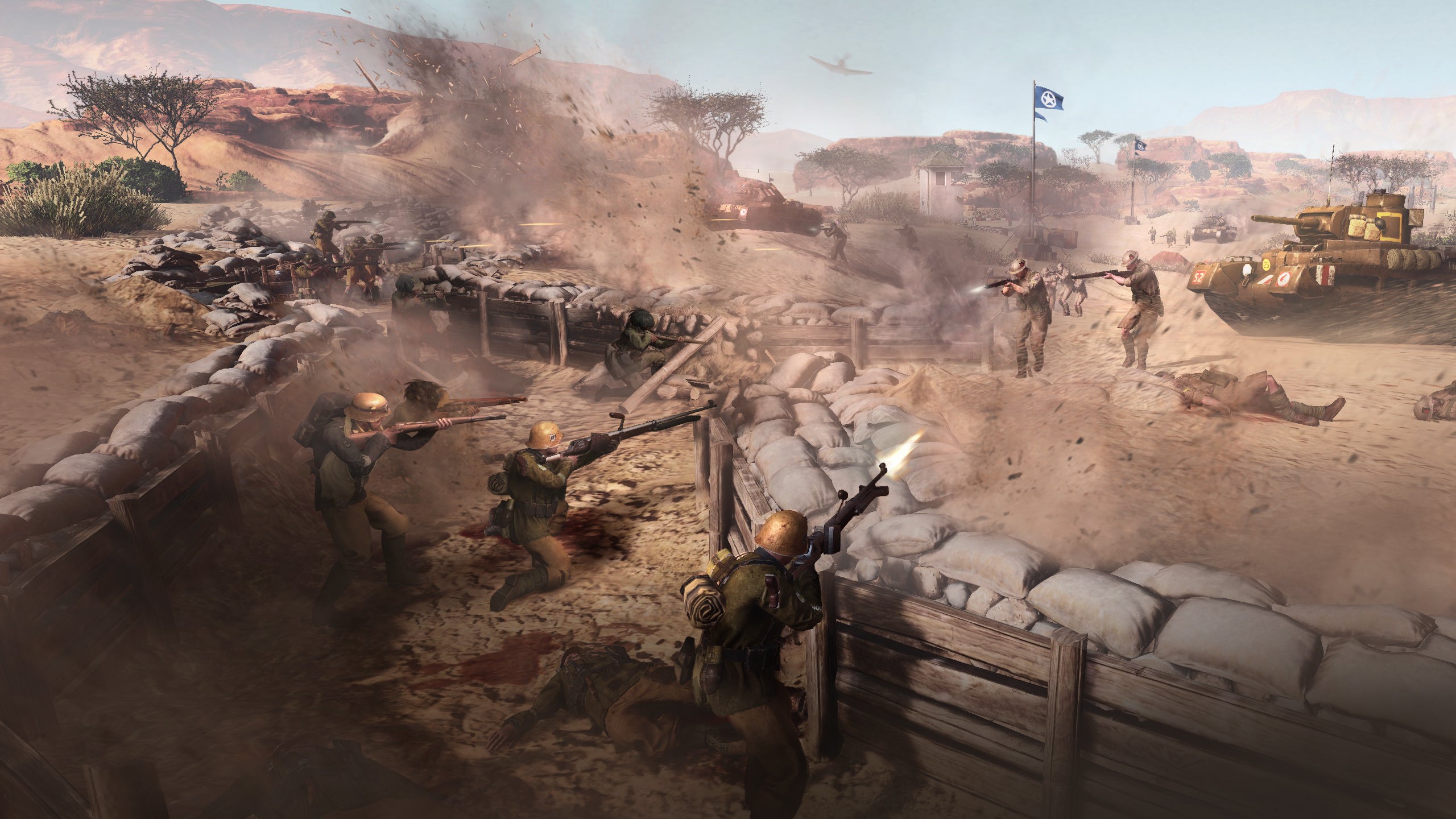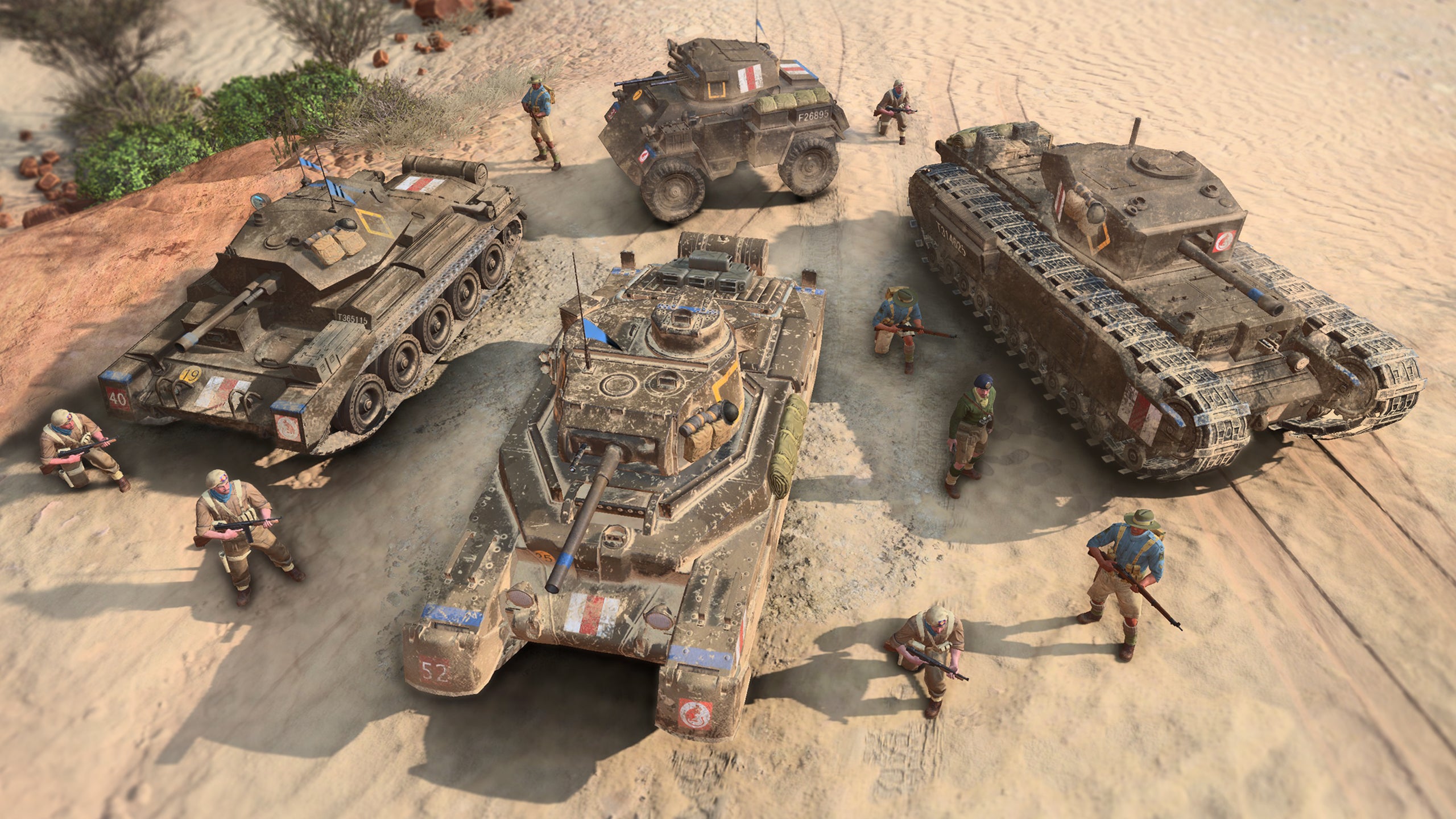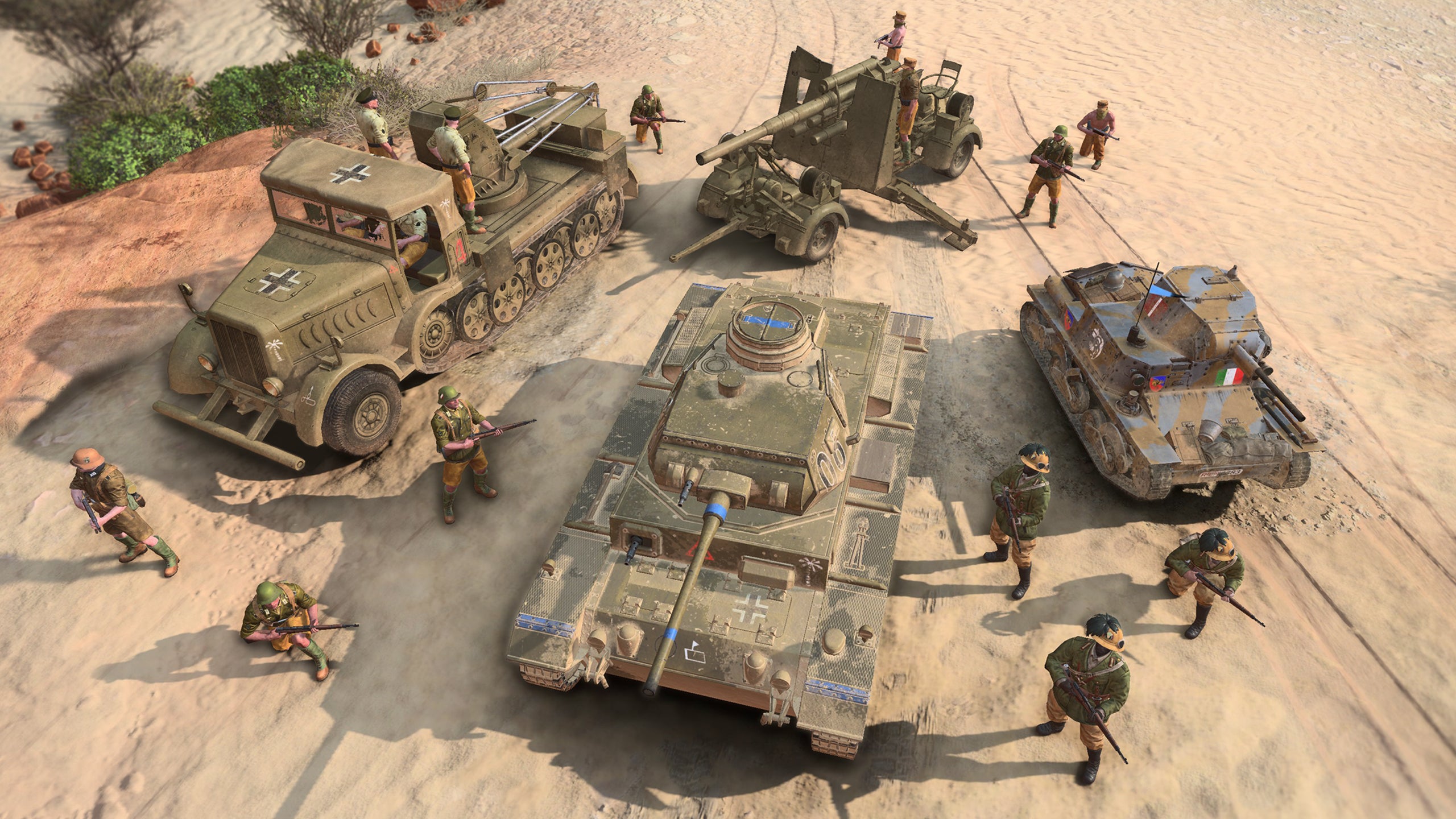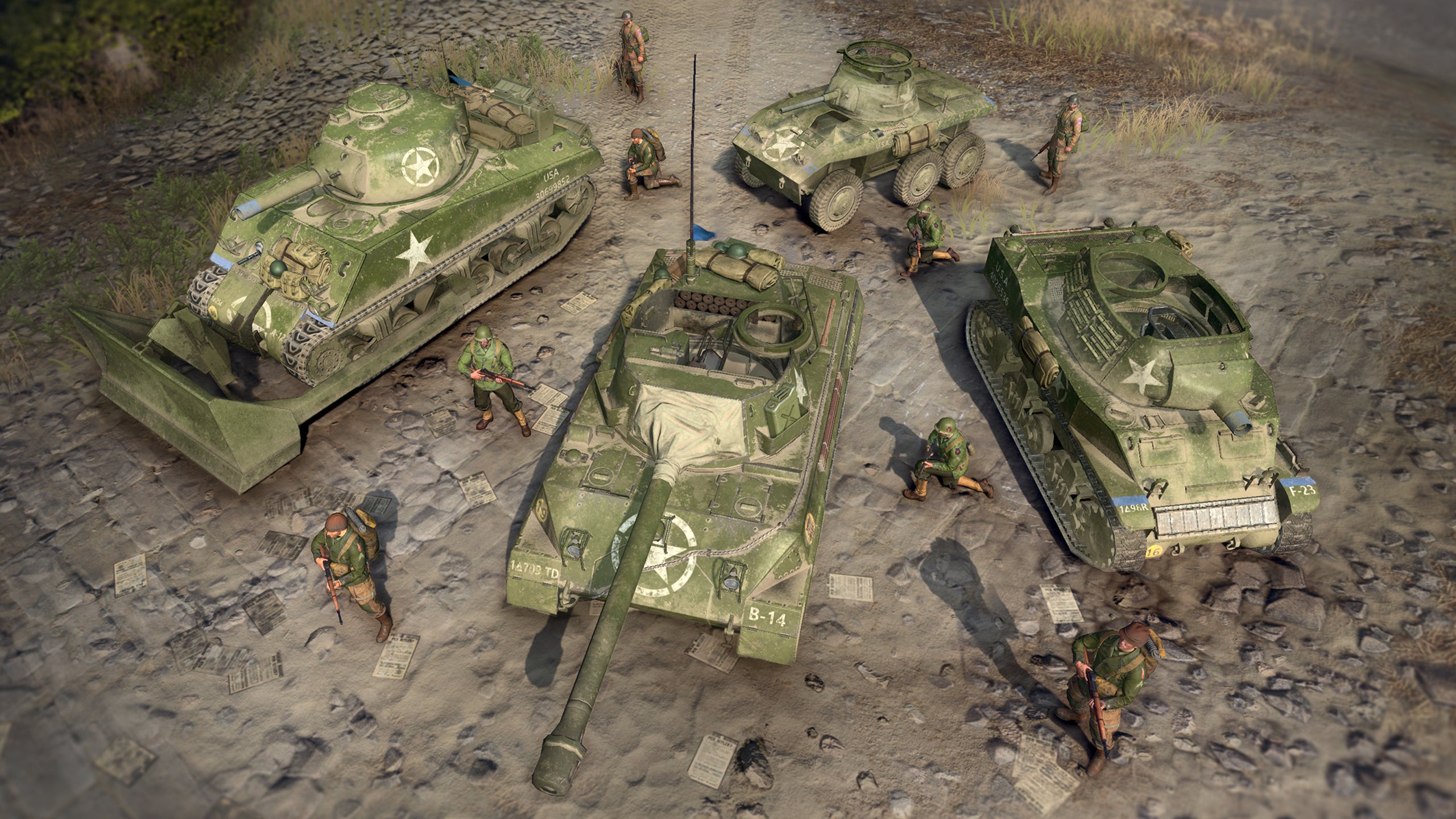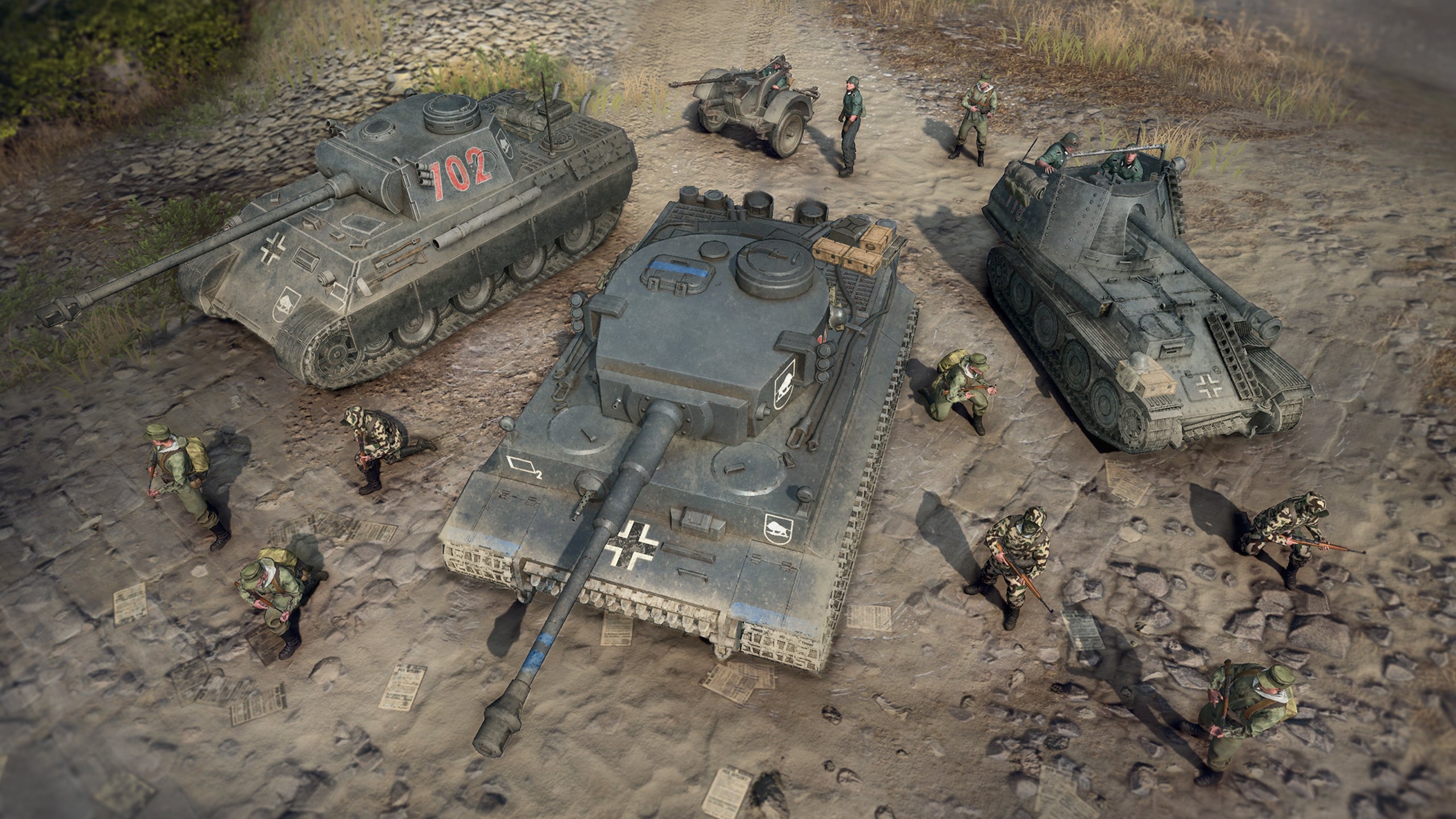This is because the setting for Company of Heroes 3, due this November, is a delicate one. There are two campaigns, one in Italy and the Mediterranean, and the other, where this preview focused, in North Africa. The North African “theatre” of the Second World War is one dominated by armoured warfare, and is also the place were Erwin Rommel, the commander of the Nazis’ Deutsches Afrika Corps (DAK), earned his reputation as the “Desert Fox”. The delicacy here comes from that reputation. Rommel’s Afrika Korps was something Relic described as “heavily requested by our community,” while Rommel himself was built up by the Germans, and then Allies, as a brilliant but detached tactician who sought to wage a “war without hate” and an almost victim of Nazi rule - something since referred to as the “Rommel myth”, given the fact that plenty of war crimes still persisted in that region throughout the period of his command. “We have to take special care with our narrative, playing as the Germans in North Africa,” a studio representative said in the initial presentation. “We definitely don’t want to tell a romanticised story, where we lean into old tropes such as the ‘war without hate’ or the ‘clean Wehrmacht’ in North Afrika, or Rommel the ‘gentleman general’. “Instead of that we want to tell an authentic and grounded story in North Africa… so in addition to our own internal research and our own efforts to get this subject matter right, we’ve been working with some external consultants who’ve been involved in helping us with our narrative and Company of Heroes 3.” How that plays out in the final game will be important, and it relates back to Relic’s notion of “humanising” the battlefield, right down to things like combat barks - lines of dialogue your units will shout out during the action - that have earned Company of Heroes its reputation for attention-to-detail in the past. “It’s tricky,” senior mission designer David Milne told me, “and it’s a conversation we’ve certainly had a lot internally and when it comes to, for instance, the barks and the units on the ground.” He mentioned the extensive amount of “write-ups” the narrative design team does, “on the background of this unit, where they’re from, what they do, how they got there - to try and guide the dialogue that they have. These aren’t just random things, they’re designed to kind of tie into the character that’s been written for them.” And again it comes back to telling the whole story of the conflict. “We are focusing on not just the battles themselves,” Milne said, “but the effect of the battles and what’s going on outside of these battles as well - it’s not just about the mission that you play, it’s about the wider effects that it had on the people in the area. And so you’re right, it’s a challenging thing to balance, but that is where we’re trying to come from - these weren’t just battles in isolation, you know… the North African campaign was seen sometimes as this gentleman’s war, almost like chess pieces on an open desert, and we’re not doing that. There are people who lived there, and they were affected by this, and we’re trying to tell that story as well.” From playing just the one additional mission for this preview as the DAK, it’s too early to tell just how successful that effort is. What is obvious, at least, is the difference in the moment-to-moment of tank warfare in the game. Some big changes to Company of Heroes 3 are the additions of towing vehicles that allow you to hook up and move large guns around the battlefield, and repair vehicles that can recover old, destroyed tanks or repair active ones much faster on the battlefield. This first mission in western Libya set you up as first attacking the British defenders, then flanking them, manoeuvring a giant anti-tank gun into place, and using it to cut off a few large waves of British forces as they sought to retreat. Much the same as with the first preview, things feel a little closer to the first Company of Heroes, particularly with the return of traditional resource points, but where this mission branched out is the pacing. Naturally, being a tank-heavy battlefield, things were faster, more centred on quick manoeuvring into flanking positions and smart use of cliffs and choke points in the terrain. In a way that’s much the same as the infantry warfare on the streets of Italy - ultimately you are jostling for priority of position either way - just with the scale a little bigger and the pace of movement faster. Things like tank riding, trench traversal, and repairs are fun, but again at this early stage the real gameplay impact is hard to properly discern. They’ve had an impact on mission design, however. Milne cites trench crossing as something that encouraged a new approach. “In the overall layout of a mission in terms of mission flow, we might use something like trenches as a way of kind of funnelling vehicles and units - now we’ve added trench crossing, right? So we can’t use those things in the same way - we had to think of new ways to focus the player into certain points on the map.” It’s also led to some fun behind the scenes just in terms of getting things working. “Having tanks actually go over trenches,” lead gameplay designer Matt Phillip said, “that just opens up a big can of worms. “Because coming back to pathing, you’ve got infantry and how they interact with trenches, you’ve got vaulting, which in its current form is automatic when the previous games were actually manual - this is something where we might work with our players in the future; we might actually have it so we have an automatic and a manual option. And then you add tanks crossing trenches as well. It’s like, okay, well, if a tank is going across a trench, what if there’s a unit in the trench? Should they move out of the way? How should they move out of the way? Should it be predictable? Should it go left? Should it go right? What happens if the tank that’s crossing just gets hit by artillery and blows up? Do they stay on that trench? Can you now move in that trench? Do we force it to one side? All these little complicated, nitty gritty things across the board.” There was some similar fun with towing. “Any RTS in history,” he said, “when you have to take two units - because pathing and responsiveness is a huge part of an RTS experience - when you take two units and you have to gel them together and merge them as one, and then separate them, that’s like, any time you talk to a programmer on that they’re just like, ‘please no, I’m begging you, don’t!’” Back on the player’s side of things, these tweaks will also likely change the balance of online play, where a single unit can often determine an entire meta. Unlike previous Company of Heroes games, however, this time multiplayer will start off with a full four factions - the US, British, Wehrmacht, and DAK forces - albeit with tweaks to each. The US will be more aggressive, the British the least complex and a bit more of an all-rounder this time, with “lots” of new units, aimed for newcomers but still with a defensive streak, the Wehrmacht has had a significant retooling, while the “hit and run” tactics will be a key part of the DAK. Still, the lingering point with Company of Heroes for now remains its context - it’s a game designed to provide a very realistic, up-close look at the Second World War, at a time where large-scale land warfare has also returned to Europe for the first time in decades. Personally, I was keen to know what it’s like to develop a game like this, being embedded in that imagery every day, at the same time as the events of the real world. “I worked on Company of Heroes from start to finish,” Phillip said after a pause, “and then I worked on all of the DLC and everything for that, and of course that took place on the Eastern Front, and then I’ve now been on this project from start to finish as well. I can absolutely say that working on World War Two games has changed my perspective on life - and everything that goes into it, just on a human level. It kind of changes my view in terms of my day-to-day interactions and just even how we built this game. It’s a tricky thing to get into… from time to time we do discuss it, it’s not something that I just turn a blind eye to, or I just put into a little box and say okay, I’m just gonna leave it there. No - it’s a part of the process.” “Absolutely,” Milne added. “As part of the research that we do for our missions and for our story. We read the big ‘macro history’ things, but we’re also reading journals, looking at people’s photos, doing this kind of thing - we were talking before, about humanising it. We want to humanise it because, you know, this was a real conflict. It was a real war, within living memory even - certainly the effects of it are within living memory still. “So that’s why we want to - as much as we want players to have, you know, fun playing this game - we want to make sure that we’re kind of honouring the history of it and the legacy of it, and making sure that people understand that this is - this had effects. It wasn’t just, you know, gameplay.”

